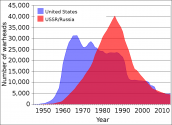2023 Report comes sooner than I thought. Some interesting interpretation from DoD:
"Told you so" to FAS report of 420 warheads.
I don't know how they concluded that DF-5C will be a megaton bunkerbuster because DF-5B has been MIRV'ed since 2005. And the "JL-3" (which is still JL-2A/B in my interpretation) is operational as expected.
Also, this one under the section of Forces, Capabilities and Power Projection - PLARF:
The PRC may be exploring development of conventionally-armed intercontinental range missile systems. If developed and fielded, such capabilities would allow the PRC to threaten conventional strikes against targets in the continental United States, Hawaii, and Alaska.
This could/should be China's answer to the US' Conventional Prompt Strike (CPS), which uses conventionally-armed Minuteman ICBMs to strike at targets at intercontinental ranges without involving the use of nuclear warheads.
I see several ways that China can achieve intercontinental-range CPS capability:
- DF-31AG or DF-41 ICBMs with conventional warheads;
- A Chinese counterpart to the Midgetman small-size ICBM through the further development of the DF-26; and/or
- A true intercontinental-range HGV missile, perhaps with a three-staged variant of the DF-27, and/or a conventional HGV-mounted DF-31AG or DF-41.
Besides, considering enemy aerial threats that are increasingly more potent at penetrating air defense systems i.e. LO missiles, hypersonic missiles, and VLO fighters & bombers - It is prudent that China's CPS be entirely mobile-based, i.e. TELs, bombers, surface combatants and submarines.
Last edited:

